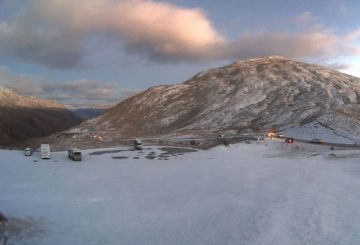来自惠灵顿六所学校的学生访问了议会,要求政府不要削减或修改免费学校午餐计划。教育部副部长戴维·西摩表示,该计划将继续下去,但要最大限度地为最需要的学生提供福利,并提供物有所值的服务。
来自泰塔学院、毕晓普维亚德学院、波里鲁阿学院、奈奈学院、荒仓学校和恩加蒂托亚学校的学生会见了来自工党、绿党和蒂帕蒂毛利人的议员。他们讨论了 Ka Ako Ka Ora 计划,并与国会议员共进午餐。学生们解释说,该计划提高了出勤率,缓解了学生、家长和教师的压力。
毕晓普维亚德学院的亨利·塔努瓦萨指出,该计划还可以帮助家长省钱,因为他们不必每天为孩子买午餐。泰塔学院十年级学生玛拉基·艾菲塔说,这些膳食改善了学生的健康状况和出勤率。他指出,这些食物鼓励了一些学生上学并专注于学习。
这些学生得到了Aotearoa健康联盟的支持,该联盟向工党教育发言人扬·蒂内蒂提交了一份请愿书。该联盟的共同主席丽莎·特·莫伦加教授认为,政府在考虑削减一项提高出勤率的计划的同时设定出勤率目标是没有意义的。
工党有自己的请愿书,敦促政府为该计划提供全额资金。工党领袖克里斯·希普金斯说,在省钱的同时继续该计划的唯一方法是减少接受该计划的学生人数或降低食物质量。
西摩回应说,现在猜测将做出哪些修改还为时过早,因为内阁仍在讨论这些变化。他指责上届政府在今年以后没有为该计划提供资金。西摩还指出,该计划仅略微增加了出席人数,仅通过资助午餐就可能要花费数十亿美元来实现政府的出勤目标。


















































(1)-360x245.jpg)










